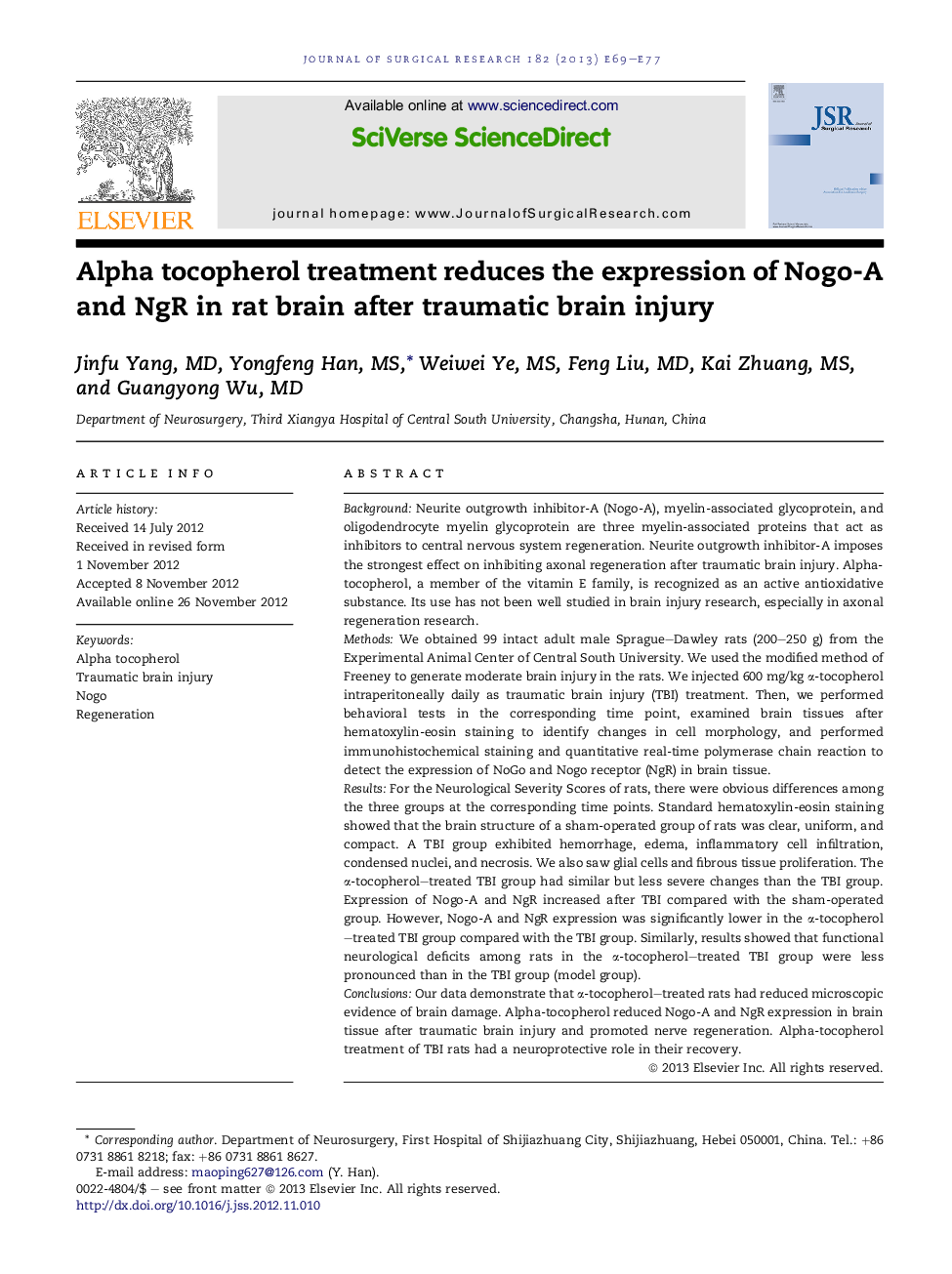| Article ID | Journal | Published Year | Pages | File Type |
|---|---|---|---|---|
| 4301033 | Journal of Surgical Research | 2013 | 9 Pages |
BackgroundNeurite outgrowth inhibitor-A (Nogo-A), myelin-associated glycoprotein, and oligodendrocyte myelin glycoprotein are three myelin-associated proteins that act as inhibitors to central nervous system regeneration. Neurite outgrowth inhibitor-A imposes the strongest effect on inhibiting axonal regeneration after traumatic brain injury. Alpha-tocopherol, a member of the vitamin E family, is recognized as an active antioxidative substance. Its use has not been well studied in brain injury research, especially in axonal regeneration research.MethodsWe obtained 99 intact adult male Sprague–Dawley rats (200–250 g) from the Experimental Animal Center of Central South University. We used the modified method of Freeney to generate moderate brain injury in the rats. We injected 600 mg/kg α-tocopherol intraperitoneally daily as traumatic brain injury (TBI) treatment. Then, we performed behavioral tests in the corresponding time point, examined brain tissues after hematoxylin-eosin staining to identify changes in cell morphology, and performed immunohistochemical staining and quantitative real-time polymerase chain reaction to detect the expression of NoGo and Nogo receptor (NgR) in brain tissue.ResultsFor the Neurological Severity Scores of rats, there were obvious differences among the three groups at the corresponding time points. Standard hematoxylin-eosin staining showed that the brain structure of a sham-operated group of rats was clear, uniform, and compact. A TBI group exhibited hemorrhage, edema, inflammatory cell infiltration, condensed nuclei, and necrosis. We also saw glial cells and fibrous tissue proliferation. The α-tocopherol–treated TBI group had similar but less severe changes than the TBI group. Expression of Nogo-A and NgR increased after TBI compared with the sham-operated group. However, Nogo-A and NgR expression was significantly lower in the α-tocopherol–treated TBI group compared with the TBI group. Similarly, results showed that functional neurological deficits among rats in the α-tocopherol–treated TBI group were less pronounced than in the TBI group (model group).ConclusionsOur data demonstrate that α-tocopherol–treated rats had reduced microscopic evidence of brain damage. Alpha-tocopherol reduced Nogo-A and NgR expression in brain tissue after traumatic brain injury and promoted nerve regeneration. Alpha-tocopherol treatment of TBI rats had a neuroprotective role in their recovery.
